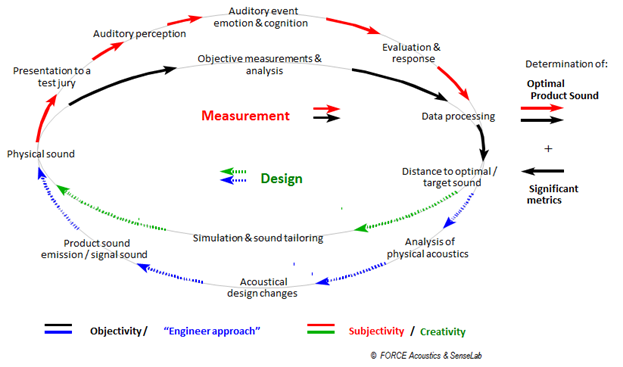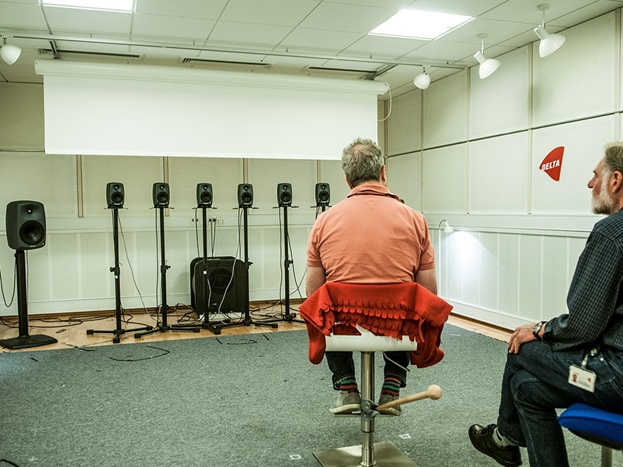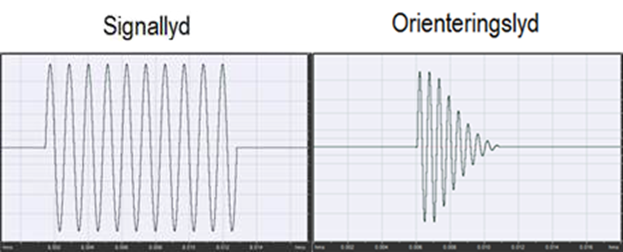How to make products better with sound
Good product sounds contribute to a positive overall impression of a product's quality. Sounds from products must be designed and should not simply be an incidental ‘waste product’.
"Product sounds" are sounds from products not intended for sound reproduction. In this context, the phrase "optimal product sounds" is used, since "sound quality" is used mostly in contexts involving reproduced sound, such as that from loudspeakers and telephones.
Good product sounds should be aligned with the expectations to a product. They should be harmonised with its quality and function, and may also support brand value. Good product sounds are not an absolute; rather, they depend both on the product and the expectations of the customer or user.
Product sounds should be a signal of good product quality. Optimal product sounds can improve customer satisfaction — and safety, in some cases — and contribute to increased sales. In a competitive market, good product sounds can be a means of differentiating a product from those of competitors.
The meaning of product sounds
Often, sound design is about minimising noise. In many cases, less noise is attractive, while in other cases, a reduction in sound levels can actually cause customers to become less satisfied. This may be the case with (e.g.) vacuum cleaners and leaf blowers, where customers associate noise with effectiveness to some extent. In such a case, the solution may be to design a sound that is perceived as "effective".In other cases, sound is desirable because it gives information about the product's status and functionality. A perfect example of this is the sound of a car door being slammed shut. This sound is optimised to communicate that "the door is solid, it protects you, it closes tightly and is high-quality, and it is now closed securely". Car manufacturers put particular care into this sound, since it is an important first impression of a car.
Product sounds can also be used to support a brand. A classic example is the sound of a Harley-Davidson motorcycle. The sound is protected as a trademark in some countries, as part of the product's design.
In the contexts of fizzy drinks and perfumes, work is also put into optimising the sound these products make when opened in order to create the right expectations in the user.
Optimising product sounds
Optimising product sounds has to do with perceived product quality, as measured by subjective ratings of the product's auditory qualities in relation to the product's desired qualities, as perceived by the user.If the manufacturer is conscious of product sounds, initial optimisations are often performed using less systematic ratings, produced by the developers themselves. There are risks involved in this: First, it cannot be taken for granted that the developers represent the users' or customers' perceptions; second, there is some inherent bias arising from the developers' knowledge of the product and their expectations of any improvements they have made.
Obtaining relevant product sound ratings requires including users from the product's target audience. This should be performed as a blind test, in which the sounds are rated in a random order.

Optimising product sounds is often an iterative process, as illustrated in Figure 1. The process starts with the product's physical sounds (to the left), possibly in several versions. The sounds are rated by a panel of listeners (uppermost red path), and the results show the characteristics that are preferred or most appropriate for the product. Physical measurements of sound characteristics may be taken simultaneously (the black path).
By comparing physical measurements with the results of the listening test, it is possible to develop an impression of which physical parameters affect the perception of the sounds, and how those parameters can be adjusted to achieve the desired product sounds. This can be simulated by editing the existing sounds (lowermost green path) for a new listening test. Alternatively, the product can be modified in accordance with the results (lowermost blue path). If necessary, this process may be repeated several times in a single development cycle.
Audible signals for the blind as an example
Often, there are a variety of considerations to take into account when optimising sounds. One example is the optimisation audible traffic signals for the blind.
The well-known beeps made by traffic signals at intersections often annoy those who live nearby. For this reason, the Danish Road Directorate asked FORCE Technology's SenseLab team to investigate the possibility of developing other, less annoying sounds that can still be clearly heard by the blind; and which can easily be located in space, making it possible for the blind to orientate them-selves using the sounds.

SenseLab performed sound tests with both blind and seeing individuals, who rated the sounds on how annoying they were, how audible they were, and how easily they could be used for orientation.
The project included a redesign of the audible signal to take advantage of technological advances in the new signal boxes. The results using the new signals showed improved product sound based on all of the parameters mentioned. This compelling improvement in the audible signals led to a change in road regulations to allow use of the new signals.

ms). The 'winners' were various click sounds that have since been written into
the road regulations.

